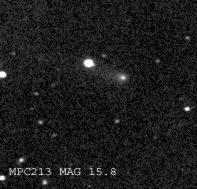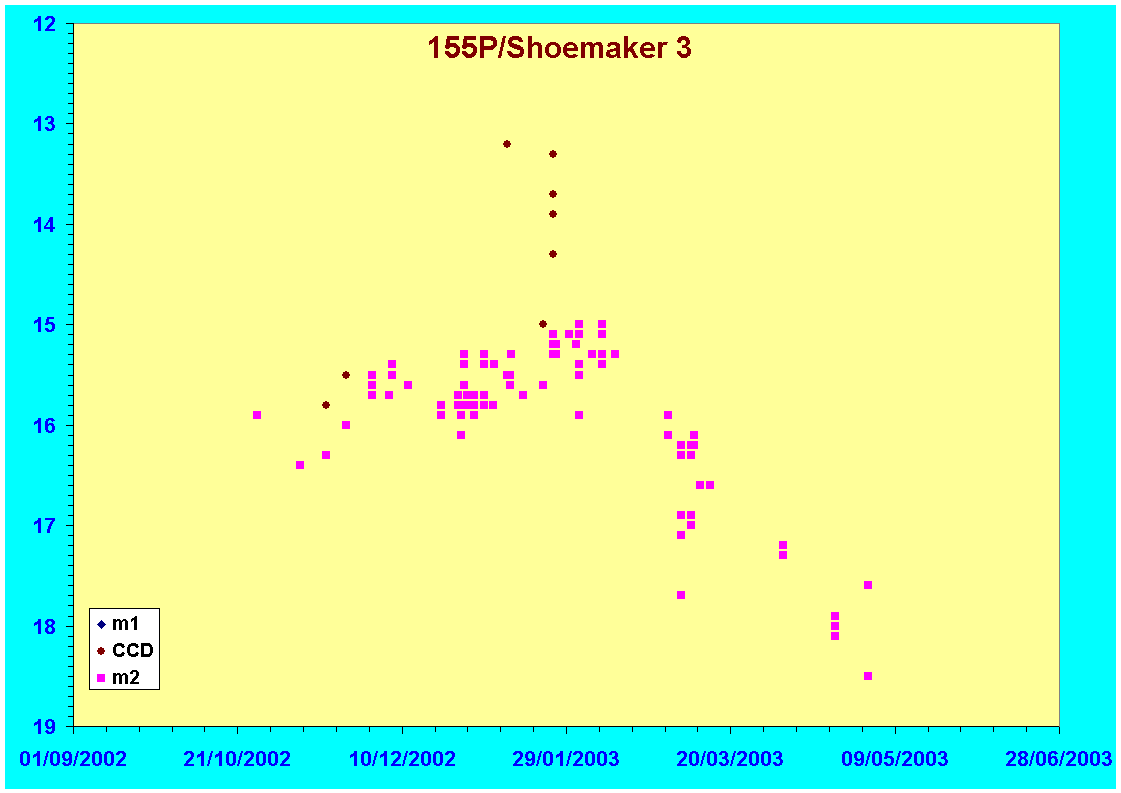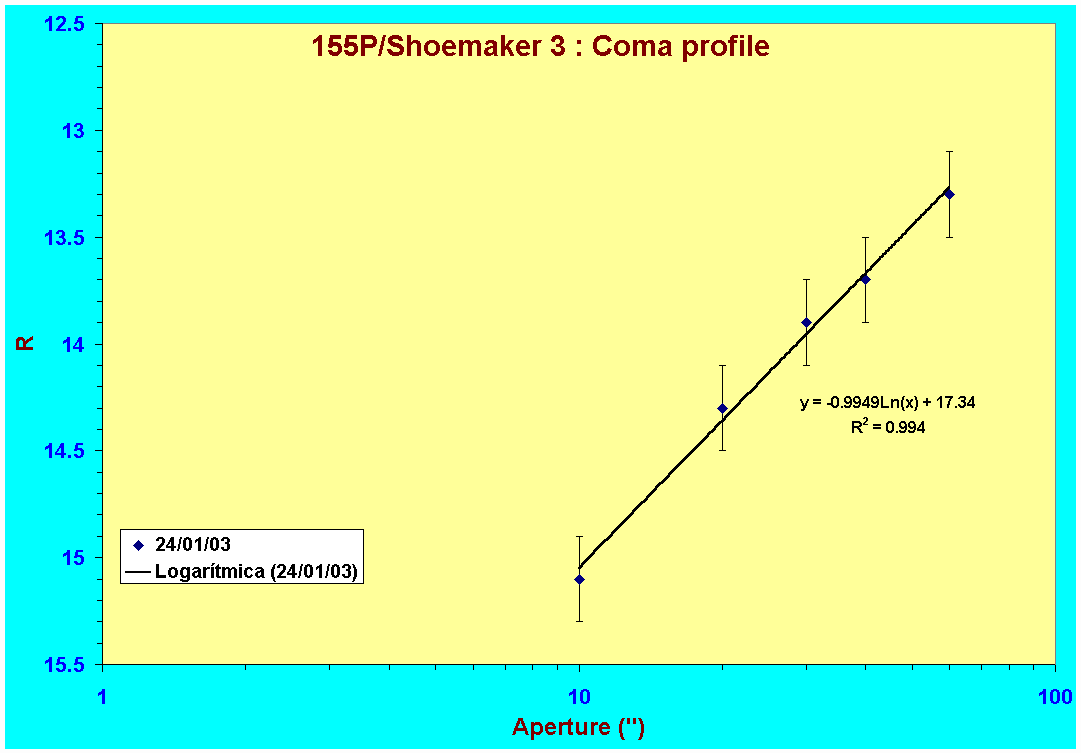155P/Shoemaker 3
Comet
155P/Shoemaker 3 was discovered by Carolyn and Gene Shoemaker with the 46cm
Schmidt camera on Palomar Mountain on January 10th 1986. The comet was magnitude 10 and had a short
tail.
Calculations by Brian Marsden gave a first estimate of the
period of 15.3 years, and an overall orbit which was very close to the accepted
one despite being based on an arc of only 10 days.
The orbital period is a
relatively long 17.11 years and the perihelion distance 1.814AU. The comet was recovered independently on September 9th 2002 by T.Aribe and by A. Nakamura on September
12th. It will reach perihelion on December 14th 2002
The light curve here is
made up of CCD photometry in R with a 10" aperture (shown as m2) and
aperture photometry with an 18.7 arcsecond aperture. The comet has the very
fast rate of brightening with heliocentric distance typical of a highly evolved
object with a thick mantle that insulates the surface ices. This is a rather
poor apparition and the comet was not expected to get much brighter than
magnitude 15 in January 2003.
The light curve data in the
10 arcsecond aperture shows a sharp drop in brightness after perihelion rather
than the continued brightening, although the total magnitude did reach
aapproximately R=13 in January 2003.
CCD observations in a 10
arcsecond aperture from:
- Isidro Almendros - MPC 212
- Ramón Naves & Montse Campàs - MPC 213
- Rolando Ligustri - MPC 235
- Albert Sánchez – MPC 442
- Miguel Camarasa - MPC 445
- Toni Climent - MPC J97
- Josep Luis Salto - MPC A02
CCD aperture photometry in 12", 18".7 and 2'.5 apertures by:
- Ramón Naves & Montse Campàs
- Rolando Ligustri

Image: December 26th
2002
Image of 155P/Shoemaker 3 taken with a 0.30-m f/6.5 Schmidt-Cassegrain +
ST9-E CCD from close to Barcelona (Spain).
The comet shows a faint tail to the upper left of the image and a
condensed coma.
Ramón Naves & Montse Campàs
MPC 213, OBSERVATORIO MONTCABRER CABRILS (SPAIN)
Coma profile: January 24th
2003
Profile of the coma of 155P/Shoemaker 3.
Obtained by CCD photometry with apertures of 10, 20, 30, 40 and 60
arcseconds.

